Carpet is manufactured by sewing strands of yarn into a backing, creating thousands of yarn loops. What happens to the loops of yarn defines the style of carpet created. When yarn loops are cut, the tufted yarn stands up straight, creating a cut pile carpet. When the loops are uncut, the carpet is called a loop carpet. These two options can be combined to create many carpet style possibilities.
 Level loop carpet
Level loop carpet
As the name suggests, level loop carpets are made up of thousands of yarn loops of similar heights. The level loops create a smooth and durable surface well-suited to high traffic areas.

 Multi-level loops carpet
Multi-level loops carpet
Multi-level loop carpets are created by combining a variety of loop heights. The results are carpets with unique patterns and textures. Multi-level loop and level loop carpets are also commonly referred to as berber carpets.

 Cut and loop carpet
Cut and loop carpet
Cut and loop carpets are combination of cut pile and loop pile that creates a sculpted design that gives visual impact to any room. These carpets can create a variety of patterns from a simple pin dot to larger floral or geometric patterns. The texture helps hide soil and stands up well to active households.

 Frieze carpet
Frieze carpet
Pronounced frih-zay’, this carpet is known by many names including twist and shag. Yarn of frieze carpets is heat twisted very tightly so it curls once it has been cut, giving frieze carpets that bouncy texture they are well-known for.

Plush cut pile carpet
Plush carpets are a type of cut pile carpets with a soft, smooth, and dense cut pile. They have a smooth and flawless appearance that gives a space a traditional and luxurious look.

Textured cut pile carpet
A textured cut pile carpet is the classic residential carpet, suitable for mid to high traffic areas. It differs from its cousin, the plush, by having more visible yarn ends. This results in a slightly more textured looking surface that reduces the crushing and traffic marks commonly found on plush carpets.

Posted on Jul 5 2013 2:52 pm by Kelsey Shipley
|
category: Carpet Flooring Flooring Guides |
2 Comments
What do wine and flooring have in common? Nothing really, until now.
Every few months the Mira team does an in-office wine tasting. It’s a bit of fun for the office team and gives us a chance to try staff favourites and wines recommended by customers.
This month’s contenders are:
 Sauvignon Blanc – Oyster Bay Marlborough 2012
Sauvignon Blanc – Oyster Bay Marlborough 2012
This New Zealand wine is a crowd pleaser that is well suited for long afternoons on the patio in the coming summer months. The Mira team thought this was a light, refreshing wine with a fruity palate. The lively fruit tones are well-balanced by the wine’s crisp acidity.
Valdepenas Gran Reserva – Anciano Aged 10 Years
This full-bodied Spanish wine was recommended to us by one of our newsletter readers. By law, all Gran Reserva wines must be aged for a minimum of 5 years before they are released. They spend 18 months in an oak cask and 42 more months bottled and cellared. The Mira team members who preferred the red loved its complex fruit flavours that lead into a long, drawn-out finish.
The winner?
Leading by just one vote, the Oyster Bay was declared this rounds winner.
Have a great wine you think we should try for our next office tasting? Let us know in the comments.
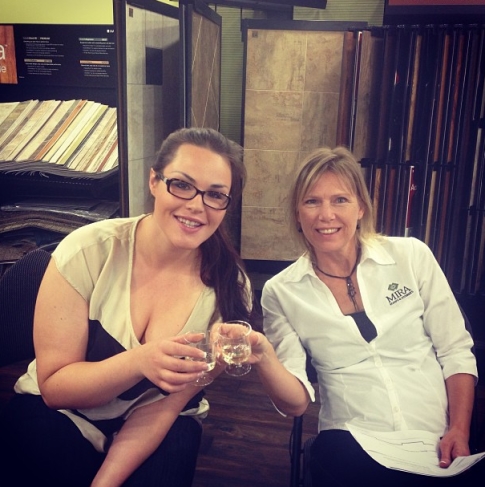

Posted on Jun 17 2013 4:30 pm by Kelsey Shipley
|
category: MIRA Wine Club |
Leave a comment
Carpet tiles were introduced to the market over 60 years ago but their popularity has rapidly grown during the past decade. Modular carpet tiles are becoming the soft surface of choice for offices, retail spaces, hospitality, and even apartment buildings. They are even popping up in residential spaces that want something more unique than the traditional wall-to-wall carpet look. Here are three reasons why we love using carpet tiles.
Endless unique design possibilities
With many offices moving away from cubicle farm layouts and embracing open spaces, designers are given larger areas to work with. Open spaces give them a chance to be more creative and try elaborate large scale designs like these new hexagon tiles from Shaw Contract.
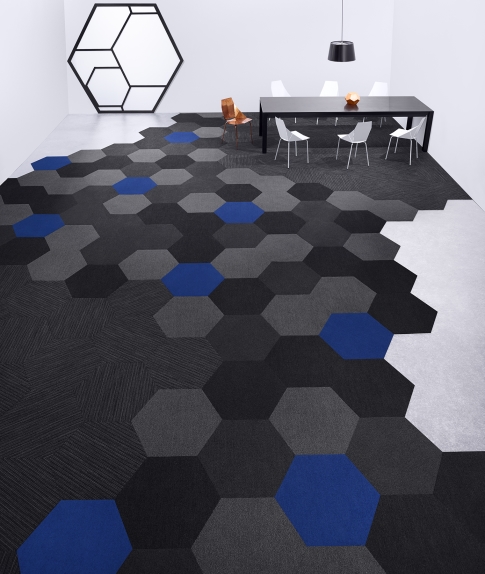
Bold statements can be made using a combination of different tiles. These bright tiles can be used to add punches of colour to a pattern or many different colours can be put together to create your own pattern.
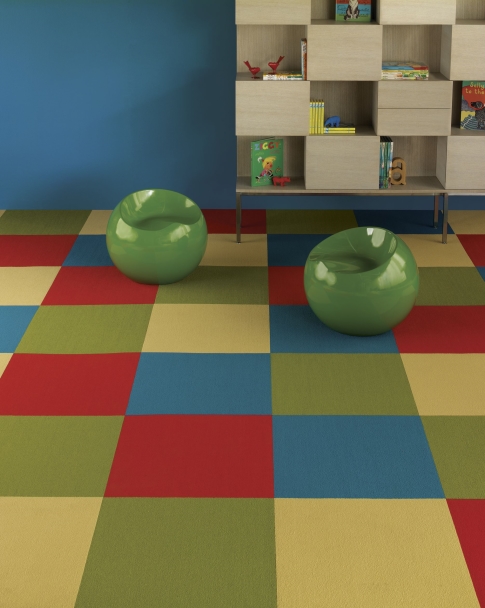
Using different installation methods can create an entirely different looking carpet for some patterned carpets. Each of the different installation methods below creates a different look for one style of carpet tile.
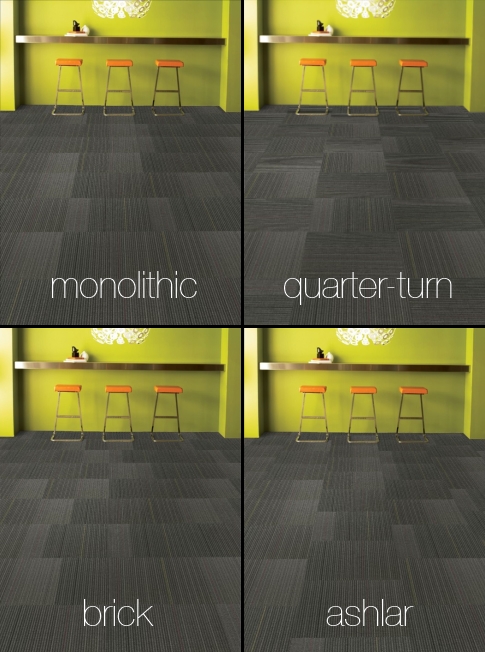
The versatility of carpet tiles allows customers to have a custom looking carpet without the cost of ordering a custom made product.
Simple to replace damaged areas
When carpet is stained or damaged, modular tiles are easier to replace than broadloom carpet. When doing a repair for broadloom carpet, a whole roll of broadloom carpet needs to be dragged down from storage, cut and seamed in. With carpet tiles repairs are much easier. Simply remove the damaged tile and put a new one back in. Wear patterns can be minimized by replacing and rotating select tiles rather than replacing the entire floor when broadloom carpet wears out.
Easier transportation and storage
12 foot rolls of carpet and a highrise elevator are not an ideal match. On installation day, it is much quicker and easier for our crews to move boxes of carpet tile instead of bulky broadloom rolls. Businesses that choose to buy extra materials to keep for repairs use less space to store a 2′ x 2′ box of carpet tiles than a 12 foot long roll of carpet.
Posted on Jun 12 2013 1:40 pm by Kelsey Shipley
|
category: Carpet Flooring |
2 Comments
Small living spaces are getting much attention in Vancouver, like the recently released 297 sf condo units in Surrey known as “Canada’s Smallest Condos“. Whether you are living in 300 sf or there are a few rooms in your home that feel a bit tiny, there are lots ways to trick the eye and make rooms appear larger. Here are our top five tips to make the most of any small space:
1. Repaint to make a statement.
Darker colours absorb light and give the illusion of less space while light colours reflect and multiply light. To keep the room bright and airy, try painting the walls cream, beige, or even a light blue-grey.
2. Use floors as a fifth wall
Floors are like a fifth wall – they are another surface for light to reflect off of. Choosing a light coloured floor will make the room appear brighter and more open. The nature inspired bedroom below uses light coloured wool carpet from Godfrey Hirst and off-white walls to keep this room feeling open.
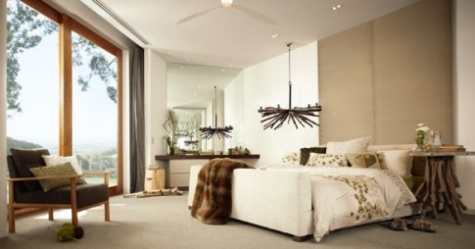
3. Go big with flooring
The World Floor Covering Association recommends using larger flooring to make the room look bigger. Whether it is planks, tiles, or patterns, go big. If you tiles are picked, trying laying them on a diagonal to make the room appear even larger. Laying these tiles diagonally creates a longer line for the eye to follow and a big visual impact on this tiny bathroom space.
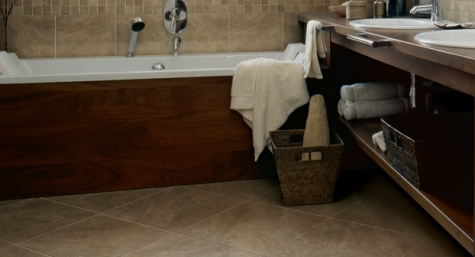
4. Let the light in.
Make use of natural light whenever it is available. Use sheer window coverings or ones you can pull back to allow in more sunlight. To maximize light, try placing a wall mirror to reflect natural light from windows. Cell shades from Shade-O-Matic like the ones below, have sheer fabric options that allow privacy without sacrificing sunlight.
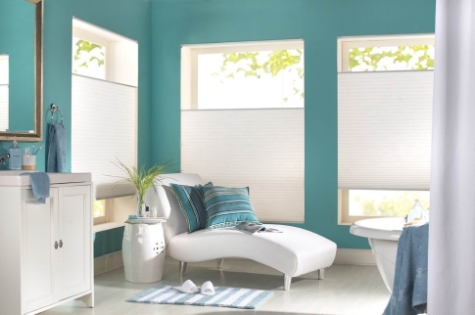
5. Cut out the clutter and reorganize.
A cluttered space looks like a small space. Clearing out clutter is the easiest and least expensive way to make a cramped room feel open. Get rid of any unnecessary pieces of furniture or knick-knacks. Replace old single-use furniture with multi use-furniture that doubles as storage to keep your personal items hidden.
Posted on Jun 4 2013 3:38 pm by Kelsey Shipley
|
category: Renovation Design Tips |
Leave a comment
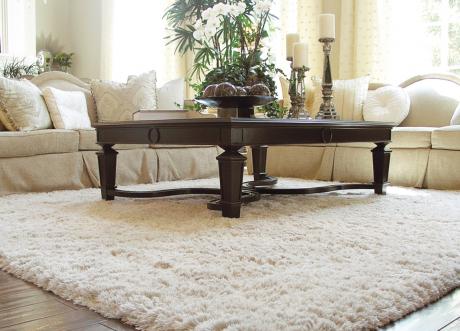
As the popularity of mid-century modern design has grown (think of the set of Mad Men), so has the popularity of shag carpet. For many, the mere mention of shag carpet brings up nightmares of wood panels, avocado green appliances, and plastic furniture. But the shag carpet of today is much different than its stringy, burnt orange cousin of the 1970’s.
It’s not just the dated colours of seventies shag carpet that make homeowners want to tear it out of their homes on sight, it’s the quality of the fibres. That harvest gold shag carpet found CMHC specials is heavily matted in all the walking paths. Carpet fibre technology has dramatically advanced since then and today’s shag carpet shows footprints less than the seventies version.
In most carpet stores, this new generation of shag is often referred to as “frieze.” The new name helps shag carpet shed its image as a style nightmare. Emily Morrow, Director of Colour, Style, and Design at Shaw Industries explains that “the simplicity and contemporary lines of the style appeal to a generation of new consumers and homeowners who did not live through the trend in its original heyday but like the nostalgic effect it offers.”
Like the look but aren’t ready to make the commitment of wall-to-wall shag carpet? An area rug is a great way to incorporate this style into your home. Broadloom carpet from any manufacturer can be cut and bound into an area rug, giving you an endless array of colours and styles to choose from.
Still skeptical about shag carpet looking good in your home? Take a look at Houzz’s shag carpet ideabook to see how shag carpet is incorporated into a variety of decor styles.
What do you think? Would you include shag carpet in your next home redecoration or is this a piece of history that shouldn’t be repeated?
Posted on May 30 2013 12:01 pm by Kelsey Shipley
|
category: Carpet Flooring |
Leave a comment
 Level loop carpet
Level loop carpet
 Multi-level loops carpet
Multi-level loops carpet
 Cut and loop carpet
Cut and loop carpet
 Frieze carpet
Frieze carpet



 Sauvignon Blanc – Oyster Bay Marlborough 2012
Sauvignon Blanc – Oyster Bay Marlborough 2012







